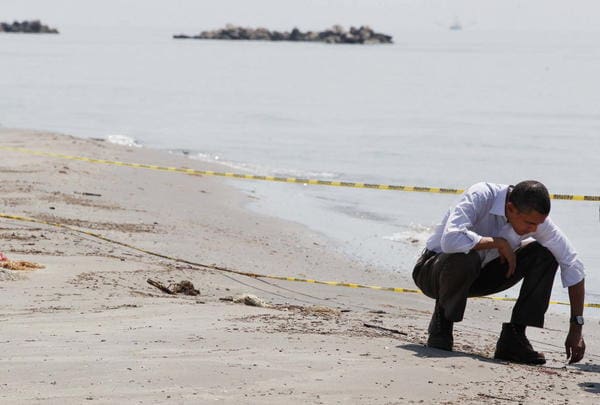Kierán Suckling is the founder and executive director of the Center for Biological Diversity (CBD), the main environmental pressure group asking the Environmental Protection Agency (EPA) to ban lead ammunition. [Click here to download the CBD’s petition.] Suckling is also a gun owner and deer hunter whose arsenal includes a Ruger Mini-14 and two handguns (.45 and 9mm). So when Suckling told TTAG “We’re against lead not against guns,” there’s at least three good reason to believe him. For those who need further reassurance that the CBD isn’t anti-ammo and thus anti-gun, Suckling has another simple message . . .
“We don’t expect the EPA to snap it’s fingers and ban lead ammunition tomorrow. It’s something we’d like to see happen over time . . . Speed is not the issue. Getting it done is the important thing.” Suckling has thought this lead ammo ban thing through—from a pro-gun perspective.
“There’s no doubt that millions of birds are dying every year from lead poisoning,” Suckling asserts. “We don’t think hunters want to see that any more than we [environmentalists] do.”
The CBD’s petition cites dozens of studies to back up its thesis that spent ammo (and lead fishing tackle) poses a direct threat to raptors and other wildlife. As I’m not a scientist, I asked the 46-year-old activist to send TTAG a single study that substantiated the link. This he promised to do.
Meanwhile, Suckling tackled the three issues vexing shooters who don’t like the idea of transitioning to lead-free ammunition.
“Their concerns about performance reflect manufacturer’s early attempts to create ammunition that performed as well as lead ammunition. Today’s lead-free ammunition performs just as well or better than the lead equivalent . . .
“Yes, lead-free ammunition is more expensive. Now. Once the manufacturers have a massive expansion of production, that price will come down.”
Needless to say, Suckling has little time for the NSSF and NRA’s contention that more expensive ammunition will lead to less hunting which will lead to less tax revenue which will lead to less federally-funded wildlife conservation.
“We don’t think hunters won’t stop hunting. In fact, they won’t mind paying a little extra to protect wildlife from lead. And if the ammo’s more expensive, that means there will be MORE tax revenue, not less.”
After making his case, Suckling lets the NRA have it, both barrels.
“The NRA has gone into its usual hysterical hissy fit, lying to its members and the public. How can they say with integrity that a lead ammunition ban is an attack on guns, gun owners and hunting? That the purpose of the campaign is to ban guns and hunting? It’s not just ludicrous, it’s a huge disservice to the public.”





There are alternatives to lead bullets, but they are so costly as to render the sport impractical for most Americans.
Case in point: air rifle pellets. RWS lead .177 airgun pellets are $16 per 500. Cabela's store brand costs $9 per 500. Gamo costs $13 per 750. Cost per pellet: $0.018 to $0.035 per pellet. And the cost of 'PBA Ballistic Alloy' non-lead pellets? $9 per 50 pellets, or $0.18 per pellet. 1000% of the cost of lead, and actually more expensive than some loaded 9mm Parabellum cartridges.
Case in point: 12-guage 2.75" 1.25 oz. #4 shotshells.
This load used to be the standard 'High-Brass' duck and goose load. Kent brand lead shells are $16 per 25 shells, plus shipping. Winchesters are $14 per 25. Average price: $0.56 per shot.
What about non-toxic shotshells, mandatory for all waterfowl? Steel shot aren't usually sold in 2.75" shells, but the 3" versions average about $20 per 25 shells. This works out to about $0.80 per shot, only a 50% price premium over lead but they also throw a huge volume of steel shot at higher velocities so the actual adjusted (apples-to-apples) price would probably be a bit lower.
Since they don't make steel bullets for rifles or pistols (they're "cop-killer" bullets, oh my!) what about the non-toxic exotics like tungsten or bismuth?
Bis-Maxx (bismuth) are $25 per TEN shells. Hevi-shot are $23 per TEN shells. Remington HD (tungsten/bronze/iron) are $22 for TEN shells. Federal Ultra Shok (tungsten) 3" are $35 per TEN shells. These non-lead exotics cost between $2.20 and $3.50 per shot, at least 400% of the price of lead shotshells.
Case in point: .308 Winchester 168-grain cartridges. Sierra Gold Medal (jacketed lead): $24 per 20 rounds. Barnes: $42 per 20 rounds. Nearly a 100% price premium.
So, in a given caliber, lead pellets cost X per shot and non-toxics cost 10X. Lead shotshells cost X per shell, steel costs 1.5X, and exotic non-toxics cost 4X. Jacketed lead rifle bullets cost X, and non-toxic exotics cost nearly 2X.
I don't consider a two- or four-fold increase in ammunition prices to be 'paying a little bit extra to protect wildlife.' I don't think I could afford to shoot much, or at all, with such prices.. I don't think many other shooters could, either, and I think the sport would decline precipitously.
(Prices courtesy of Cabela's, and do not include tax or shipping.)
You hit the bulls-eye Chris.
Comments are closed.